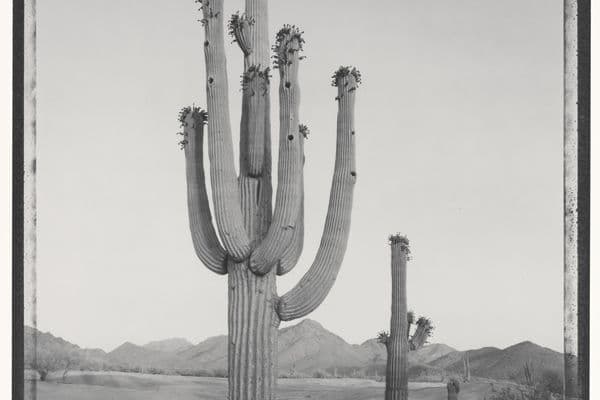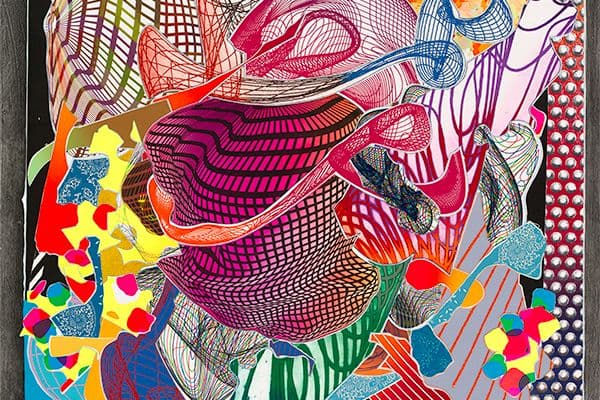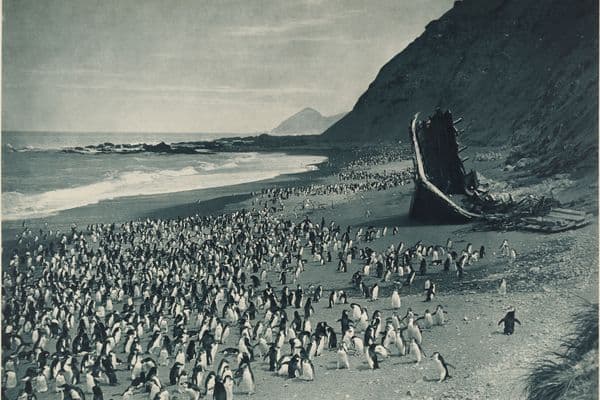Joie de Vivre
Twentieth-Century French Photographs
9 Apr 1988 – 31 Jul 1988

Henri Cartier-Bresson, Rue Mouffetard, Paris, 1954 prtd c. 1980, National Gallery of Australia, Kamberri/Canberra, Purchased 1982.
Curatorial Introduction
‘Photography is a magic thing . . . now I will be able to make portraits of everything . . . everything!’. With these words, the seven-year-old Jacques Henri Lartigue at once exclaimed his enthusiasm for photography and heralded its new-found versatility.
The invention of the hand-held camera late last century gave photographers the freedom to find their subjects outside the more static compositions demanded by the cumbersome cameras that had been in use since around 1840. Fleeting scenes in streets and cafés, as well as travel experiences, could now be captured by the new, portable camera. The term 'human interest' is often used to describe this genre of photography. Its contemporary appeal was in its observation of commonplace, everyday scenes, and in its depiction of exotic aspects of society, such as the seedy night-life of the Montmartre brothels, or the antics of the bourgeoisie and the artists and writers who flocked to Paris during the early part of the century. These subjects continue to appeal to audiences, as do the costumes, automobiles and flying machines of the period.
At the age of six, Jacques Henri Lartigue was given his first camera, with which he recorded his fascination for the stylish ladies on the boulevards, exciting automobile races, and the madcap pastimes of his wealthy family. His imagery denotes an innocent perception of the world, seen through the wondering eyes of the very young. Lartigue's vision and sense of pictorial balance was intuitive, and his most charming and spontaneous images were produced before he was twenty. Although he continued to photograph throughout his life, his later training as a painter influenced his compositions, which became more formal and composed.
André Kertész began photographing in 1912 in Budapest, Hungary, where he recorded the distinctive aspects of his native country. In 1925, hoping to work within a more supportive and experimental artistic community, he moved to Paris. He was quickly accepted by the avant-garde group that was centred around Montparnasse, and whose members included painters such as Mondrian, Léger and Chagall. His photographs began to reflect his growing fascination with the concepts of surrealism, through which reality could be transformed into fantasy. He continued to photograph familiar details of his surroundings, but his compositions became more refined through his sensitive observation of abstract relationships between curves, angles, light and shadow. In 1927 Kertész started using a lightweight 35mm Leica camera, which enabled him to capture transitory moments and unexpected situations. Working as a freelance photographer, he was often able to publish his work in newspapers and magazines such as The London Times, Frankfurt Illustrierte and Vu. In 1936 he moved to New York to work for a photo agency, intending to stay for a short period. However, the intervention of the second world war forced him to take up permanent residence in the United States.
Brassaï, like Kertész, began his photographic career in Hungary. He studied painting in Hungary and Germany before moving to Paris in 1924, where he worked as a journalist. Entranced by the atmosphere of Paris at night, he was inspired to translate his vision into photographic images. He borrowed a camera, received some technical advice on night-time photography from André Kertész, and set out to photograph the nighttime moods of his new city. These photographs were later published in a book, Paris de nuit [Paris after Dark]. These early works were concerned with patterns and graphic effects rather than with people. However, while taking these photographs, Brassaï cultivated friendships with some of those whom he later photographed; they introduced him to the world of cafés, brothels, dance-halls and side-shows that had previously lured painters like Toulouse-Lautrec and Degas. Sometimes the scenes he produced appear quite candid, but for the most part his subjects participated in the act of being photographed. Brassaï had a large camera mounted on a tripod, a bulky contraption which required a degree of co-operation from his subjects. He disliked the snapshot obtained from small-format cameras, preferring the status quality of a composed photograph.
Gisèle Freund believed that a person's character and history was written in the face. In her portraits she searched for the symbolic essence of an individual. She used her camera to depict that which she took most to heart: a gesture, a sign, an isolated expression. She considered that the expressive value of a photograph depended ultimately on the character of the photographer and the point of view chosen. Her goal was always to make her camera the witness of the time in which she lived, and she achieved this through sensitive portraits of many of the greatest artistic and literary figures of this century. Freund worked as a freelance journalist for French and British journals, and her photographic portraits were often reproduced in these publications.
Henri Cartier-Bresson's enthusiasm for the medium developed as a result of a sudden realization that photography could provide an enduring record of a moment in time. He coined the phrase 'the decisive moment', which is the precise time in which recognition of the significance of an event, as well as the exact organization of the forms that comprise it, give that event its visual impact. Cartier-Bresson did not crop or alter his photographs; his decision was made as he pressed the button. Before discovering photography he had studied painting, and was particularly influenced by the considered arrangement of objects and the underlying structure in the work of Cézanne and the Cubists. The significance of this influence became especially apparent in the composition of his photographic work. Cartier-Bresson discovered the Leica camera in 1933, and its small size and silent shutter allowed him to be less conspicuous in his role as photographer. He travelled widely to photograph many aspects of the world and its people, becoming renowned for his photojournalism. Above all, he sought to represent the essence of a situation within the confines of a single photograph — 'a dialogue between the eye and the heart'.
Edouard Boubat is also recognized for his humanist approach to photojournalism. Early in his career he worked for Réalités magazine, which gave him the opportunity to travel and photograph people from many different cultures. Illustrated magazines such as Réalités and Paris-Match, and the photographers who contributed to them, played an important role in the psychological regeneration of a war-weary France. People who wanted to create a new, peaceful life found in these magazines photographs of the simple pleasures and emotions that gave meaning to everyday life. Boubat's photographs link common human experiences by documenting the ways in which people of all social levels and cultures interact with each other and their environments.
The distinguishing features which unify the photographs in this exhibition are their spontaneity and celebration of life. Through their observation of everyday scenes, the photographers represented here sought to capture the spirit and character of contemporary life, and to portray it with dignity and vitality.
Kate Davidson
Curator of International Photography











